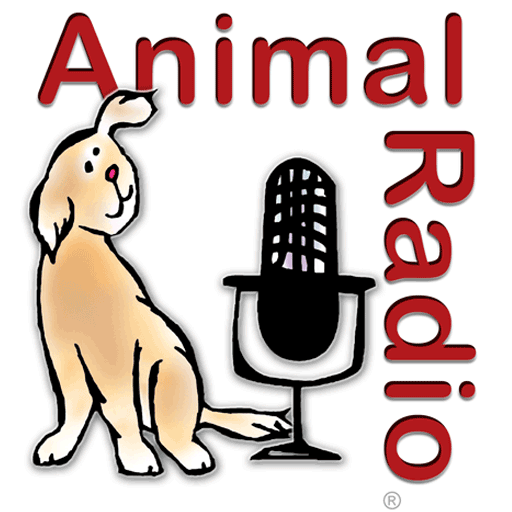Comedian Seth Herzog
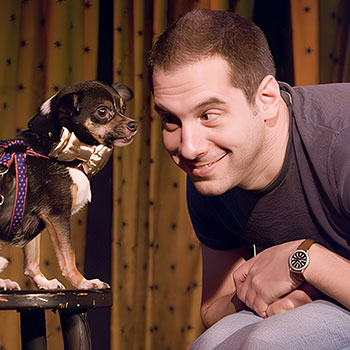 Seth Herzog is a comedian, writer, food-eater, funny face-maker & break-dancer. He is also a popular New York City comedian and was the co-host of the pop science National Geographic Channel series - Duck Quacks Don't Echo.
Seth Herzog is a comedian, writer, food-eater, funny face-maker & break-dancer. He is also a popular New York City comedian and was the co-host of the pop science National Geographic Channel series - Duck Quacks Don't Echo.
Duck Quacks Don't Echo was a one-hour program where three hosts, all comedians, Tom Papa, Michael Ian Black and Seth Herzog, presented weird, unusual and incredible facts and then got to test the validity of their 'facts' though in-studio or pre-produced experiments.
Some of the things they put to the test was whether or not you could eat six saltine crackers in a minute? (The answer: no) Was there a way for bacteria from the toilet to reach your toothbrush? (The answer: yes) When you use a public restroom, should you go to the stall nearest the door because it is the cleanest? (The answer: yes) Can you stretch a rubber bathing cap in the pool large enough so that you can fit in it? (The answer: yes) Can pigs look up? (The answer: no) Do cows with names produce more milk? (The answer: yes) Do dogs yawn when you do? (The answer: only if their owners does, but not with strangers)
Simply put, Duck Quacks Don't Echo presented over-the-top hypothesis and then went about proving them. It was all presented in a funny, breezy way. Like three good friends meeting up once a week to test each other's knowledge of obscure and wonderful data, Duck Quacks Don't Echo was a celebration of science.
Visit Website
Therapy Cats
Paula Scott, Pet Partners
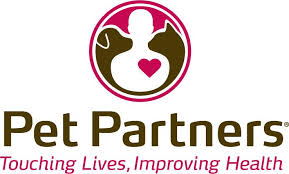 Paula Scott works for Pet Partners, formerly Delta Society, an organization that registers therapy animal teams to make voluntary visits to hospitals, nursing homes, schools and other facilities. Pet Partners registers many domestic animals, including dogs, cats, rabbits and miniature horses. Research has proven that animal-assisted interactions can make people feel better and promote healing.
Paula Scott works for Pet Partners, formerly Delta Society, an organization that registers therapy animal teams to make voluntary visits to hospitals, nursing homes, schools and other facilities. Pet Partners registers many domestic animals, including dogs, cats, rabbits and miniature horses. Research has proven that animal-assisted interactions can make people feel better and promote healing.
Paula explains that they work with therapy animals, not service animals. Therapy animals, according to their definition, are animals that provide comfort and joy to people. While a service animal is an animal specially trained to do work or tasks for a person with a disability who owns the animal.
How do animals get certified as therapy animals, in particular cats? Cats are definitely different than dogs and most are not as social. If you feel you have a cat that would make a good therapy animal, you can prepare your cat by taking them out into public places. There are not many places where you can take your cat in public, but some great places are pet stores and even to parks. You want them to get accustomed to being around other people. You also want them to be able to handle being held and touched by many different people. The best thing to do is to work with them while they are kittens.
Next, you must assess whether your cat has the right temperament to work with people. The ideal therapy cat is laidback and friendly and shows no aggression toward people or animals. The feline should also be comfortable with loud noises and unpredictable situations.
 Retired show cats often make good therapy animals because they're used to frequent handling and being around lots of people.
Retired show cats often make good therapy animals because they're used to frequent handling and being around lots of people.
Once the organization has established that you and your cat meet requirements, you may undergo a training course either online or in person. When the course is complete, an expert will evaluate you both before going on supervised visits to the facility where you'll be working as a therapy team.
Once this trial period is complete, you and your certified therapy cat will be ready to bring purrs and pets to those in need.
Pet Partners also requires that pets not be fed a raw protein diet. Such a diet puts people, especially those with compromised immune systems, at a higher risk for infection.
Pet Partners currently has over 11,000 animal teams around the country. Teams consist of one therapy animal along with their handler. While most of the animals are dogs, there are about 200 therapy cats. They also have miniature horses, guinea pigs, rabbits and pot bellied pigs. They even have a couple of therapy rats.
You will find some great information as to what to look for in a pet that would make a good therapy animal at their website.
Visit Website
New Year's Resolution for Cat Owners - Don't Forget Kitty - Dr. Debbie
 While it doesn't seem right, cats are 30-percent less likely to receive veterinary care than dogs.
While it doesn't seem right, cats are 30-percent less likely to receive veterinary care than dogs.
For example, Patty cringes at the idea of taking Muffin, her 12-year-old Persian cat to the veterinarian. She envisions the ten minute wrangle to catch her, the acrobatics placing Muffin in the pet carrier, and the ear piercing protest on route to the hospital. Patty observes Muffin lounging contently on the couch, considers her cat's healthy appetite, trouble free litter box use, and indoor lifestyle. Patty puts the carrier away declaring, "Why would I want to go through the hassle taking her in to the vet when I can see she is perfectly healthy." But skipping that veterinary checkup could mean big trouble for Muffin though.
Senior cats over seven years old can develop diseases such as hyperthyroidism, hypertension, osteoarthritis, kidney disease and diabetes. And failing to detect these problems can lead to more advanced health problems, less treatment options, less favorable outcome and higher future veterinary costs down the road.
Why Are Cats Forgotten?
In the U.S. cats are the most popular household pet, with over 80 million pet cats nationwide. But despite the cat's status as top pet, they are 30-percent less likely to be taken to the veterinarian than their canine counterparts. So why don't cats receive the same veterinary care that dogs do?
There are many reasons why cat owners might not present the cat to the veterinarian. Cat owners may not see perceive a health concern. Cats don't typically complain, especially with chronic developing diseases, so cat owners miss the boat if they expect kitty to tell them when they are sick. The self-sufficient feline nature makes it is more difficult for pet owners to detect abnormalities in appetite, elimination and behavior.
The economy is a common reason that some pet owners fail to get kitty in to the veterinary office. Some cat owners forgo preventative veterinary visits as a means to minimize costs, not realizing the long term health consequences. And like Muffin's owner, many cat owners' just don't want to stress the cat and chose to skip the vet travel and feline melodramatics.
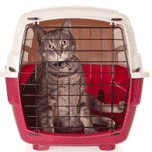 Some cat owners also don't value the veterinary examination or the health clues it provides. And preventative pet care for some owners consists solely by vaccinations and when those aren't pursued, veterinary care falls by the wayside.
Some cat owners also don't value the veterinary examination or the health clues it provides. And preventative pet care for some owners consists solely by vaccinations and when those aren't pursued, veterinary care falls by the wayside.
My Perspective
In my veterinary office I've seen cat patients whose last veterinary exam was many years ago, perhaps two, three or even ten years ago. That's a long time for a cat's medical problems to brew and develop. Sometimes it's already too late and advanced disease has set in. I'd much rather see those cats years before when we can better help them, rather than at a euthanasia visit.
During a veterinary exam, the doctor performs a comprehensive examination to detect abnormalities. Maybe it's a new lump, a change in body condition, an altered stance, a tell-tale odor of kidney disease or a useful clue provided by the owner's health history. The veterinary examination is the best money you can invest in your cat's health and which generates teamwork between you and your vet to keep your pet healthy.
Resolutions for the Future
No wonder cats are the favored pet with their gorgeous looks, complex personalities and mysterious aura. Resolve to keep your kitty healthy in 2025 and ensure your cat gets to the veterinarian at least once a year, although twice a year is preferred for senior cats. When that next veterinary visit comes, be armed with confidence, patience and of course, a sturdy pet carrier.
Featured veterinarian known as "Dr. Debbie" on national pet radio program, Animal Radio. Ebook author of "Yorkshire Terriers: How to Be Your Dog's Best Friend"; "Pugs: How to Be Your Dog's Best Friend"; "Mini Schnauzers: How to Be Your Dog's Best Friend"; and "Shih Tzu: How to Be Your Dog's Best Friend." Dr. Debbie's books.
Visit Website
10 Ways To Save Money On Vet Bills
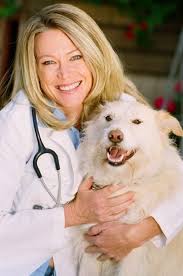 Doc Halligan Minute
Doc Halligan Minute
You certainly don't have to be wealthy to keep your pet healthy, but what you do need is some sound vet advice, common sense and the discipline to practice preventative healthcare.
Here are my top ten ways to save money on your vet bills:
1. Feed your pets high-quality pet food and don't give table scraps.
2. Do a once-over on all of your pets at least once a week.
3. Spay and neuter your pets.
4. Brush your pets' teeth at least once a week.
5. Exercise your pets and keep their weight down.
6. Make sure your pets get a yearly exam.
7. Develop a good relationship with your vet.
8. Use flea, tick, heart worm and parasite prevention on your pets.
9. Be prepared for holidays and seasonal changes.
10. Consider getting health insurance for your pets.
Animal Radio News with Stacey Cohen
 Two Heads Are Better Than One - Ask This Cow!
Two Heads Are Better Than One - Ask This Cow!
Sana Saida, a cow whose name translated into "Happy New Year" in Arabic, was born in the town of Sefrou in central Morocco. The animal had a condition called polycephaly, which means having two heads and is more common among turtles and snakes, and Sana Saida was said to be healthy.
Pet Food Recalls On The Rise
Nothing is certain in life except death and taxes and, increasingly, pet food and treat recalls. Every year the Food and Drug Administration receives many complaints from consumers regarding pet food and livestock feed. The complaints range from an animal refusing to eat a food to illness and death. Here are steps you can take to reduce your dog or cat's risk.
- Mix it up. Don't feed the same brand or flavor all the time. If you rotate food frequently, your pet will be less likely to encounter a bad batch.
- Call the manufacturer. Use the toll-free number on the bag or can to ask about ingredient
- Choose undamaged containers. The Centers for Disease Control recommends avoiding bags with visible signs of damage to the packaging, such as tears or discoloration and cans with dents.
- Photograph package codes and expiration dates so you have a record if there's a problem.
- Scoop food out of the container using a clean measuring scoop, spoon or cup, not your pet's food bowl.
- Wash pet food dishes in hot, soapy water after every meal or run them through the dishwasher. It will kill bacteria, and besides, your pet doesn't want to eat out of a dirty dish any more than you do.
- Report any adverse reactions to foods or treats to the FDA's Safety Reporting Portal at their website.
 First Humans, Then Pets, Now Monkeys Are Becoming Obese
First Humans, Then Pets, Now Monkeys Are Becoming Obese
First it was Britain's human population, then it was cats and dogs. However, it seems that even the country's pet monkeys have succumbed to an obesity epidemic. Animal welfare experts have warned that growing numbers of primates are facing problems with their weight, as a result of sugar-rich diets and lack of exercise. There are an estimated 5,000 monkeys kept as pets in the UK. Welfare experts report seeing an increasing number of health problems among the animals, apparently caused by unhealthy lifestyles. Staff at sanctuaries devoted to caring for primates say they are dealing with many former pets being handed over to them suffering from the effects of "couch potato" lifestyles, where they have been indulged on unsuitable human foods and not given enough exercise. They are fed on things like sweets, pizza, chips and cake, whatever their owner is eating. And many don't have enclosures large enough to run it all off." Sanctuaries have more than 40 monkeys and around half of those that come in are suffering from health problems linked to nutrition and exercise. It also follows similar warnings about obesity in dogs and cats, as well as in other animals such as pet rabbits and even horses.
 Listen to the entire Podcast of this show (#1308)
Listen to the entire Podcast of this show (#1308)
